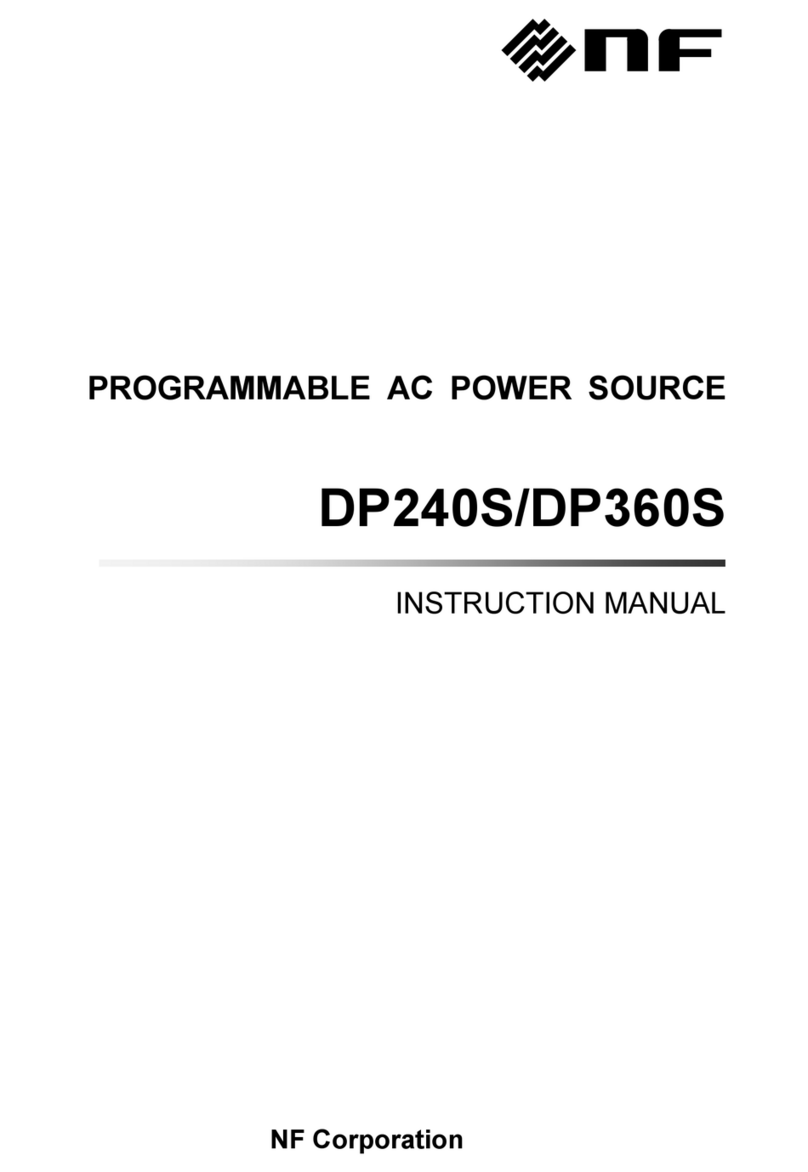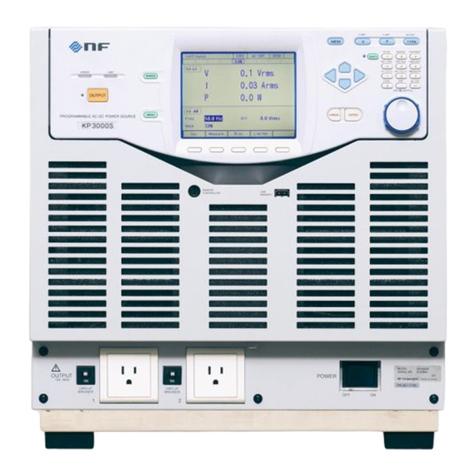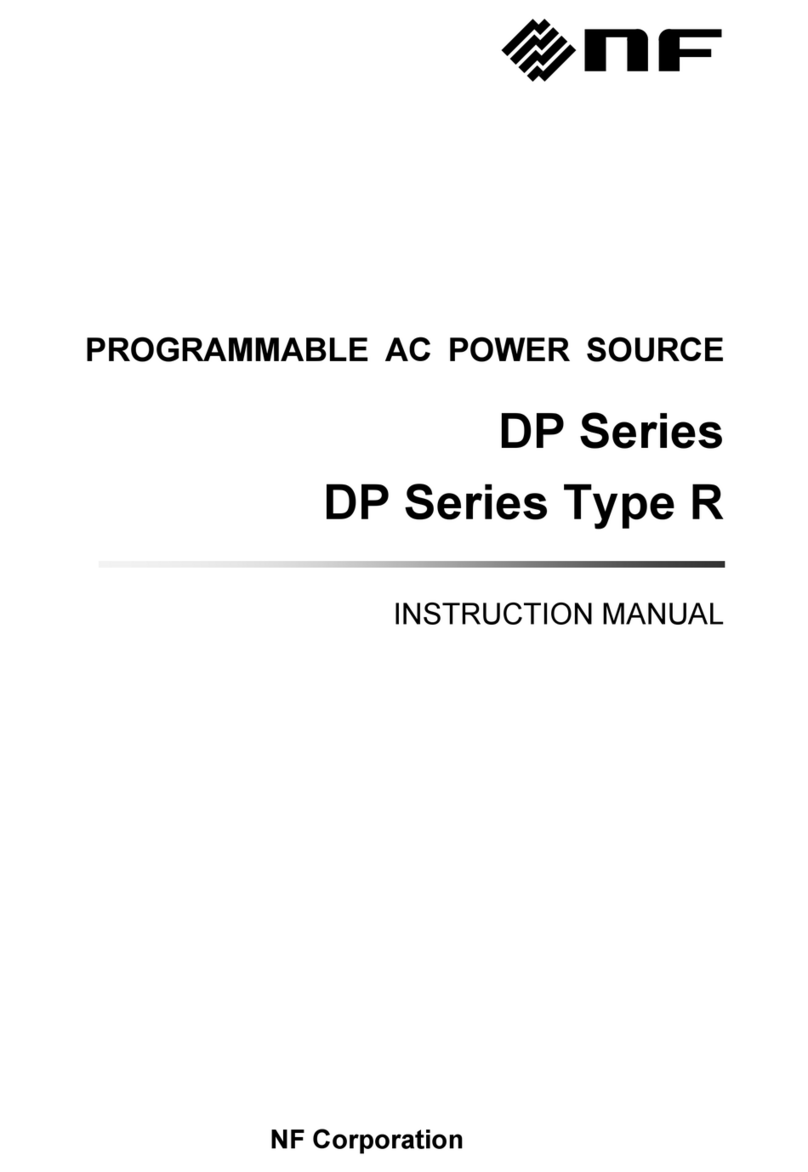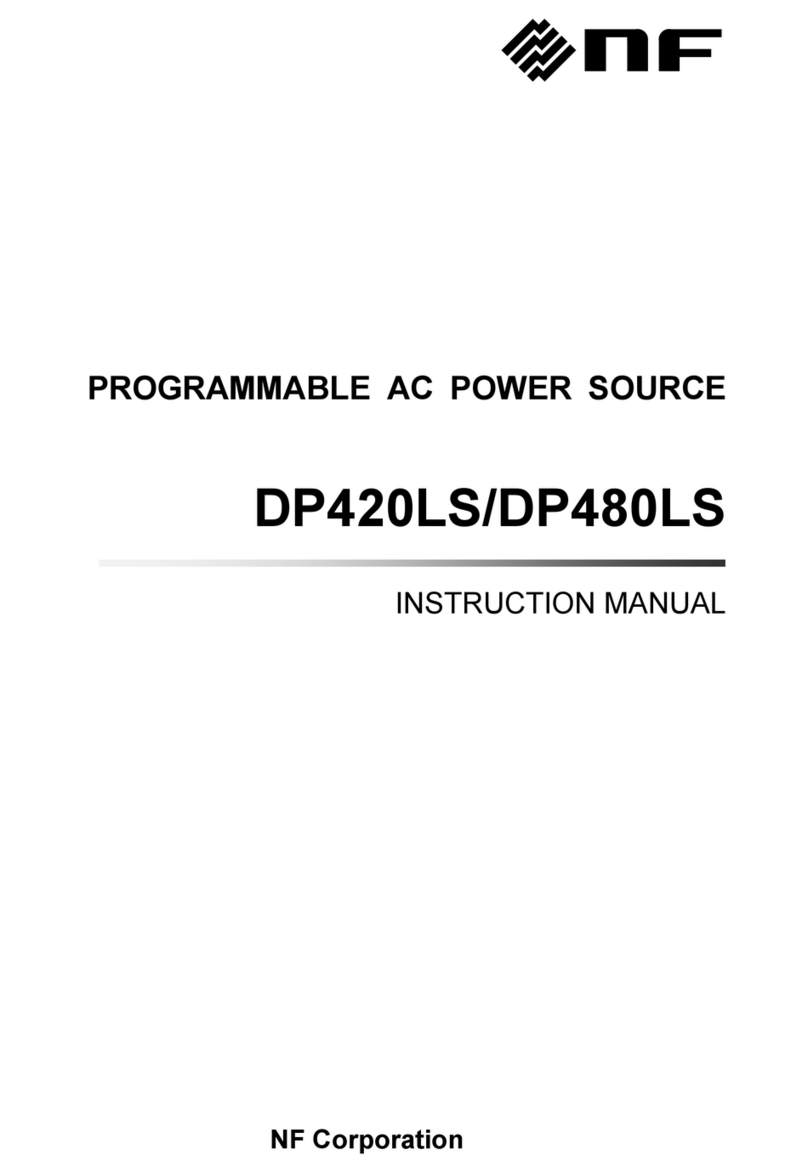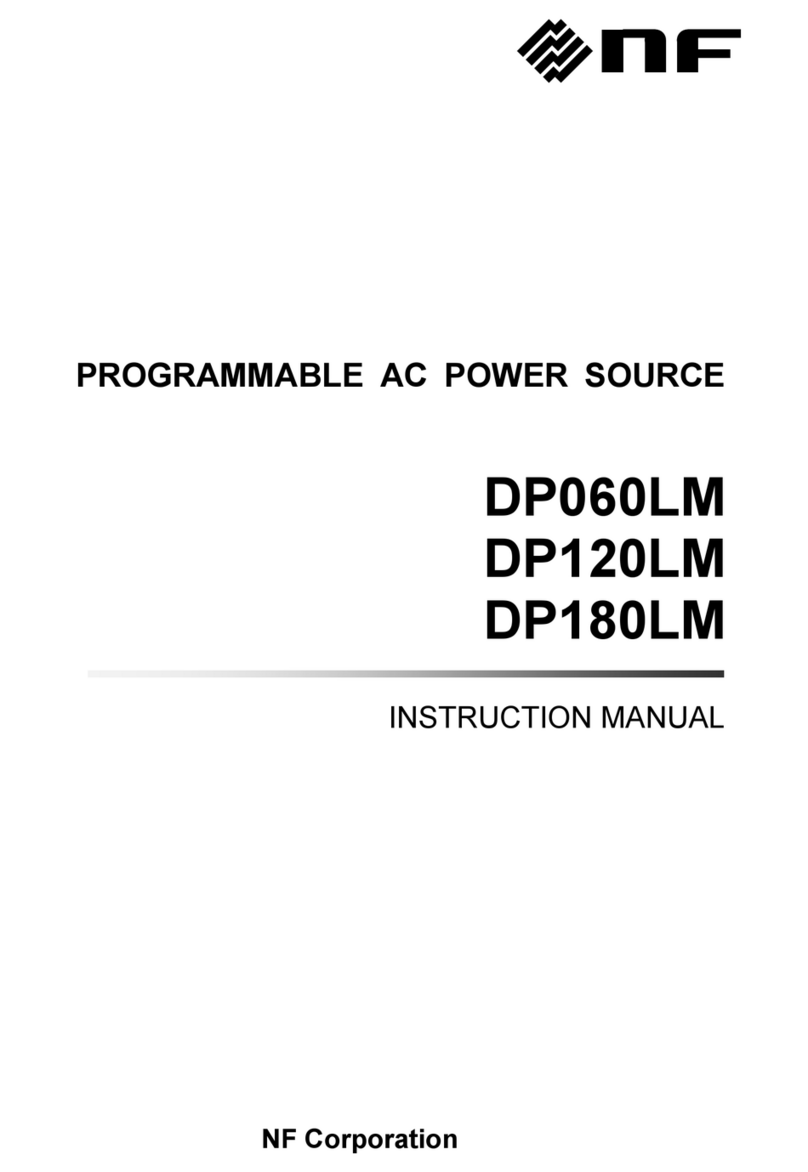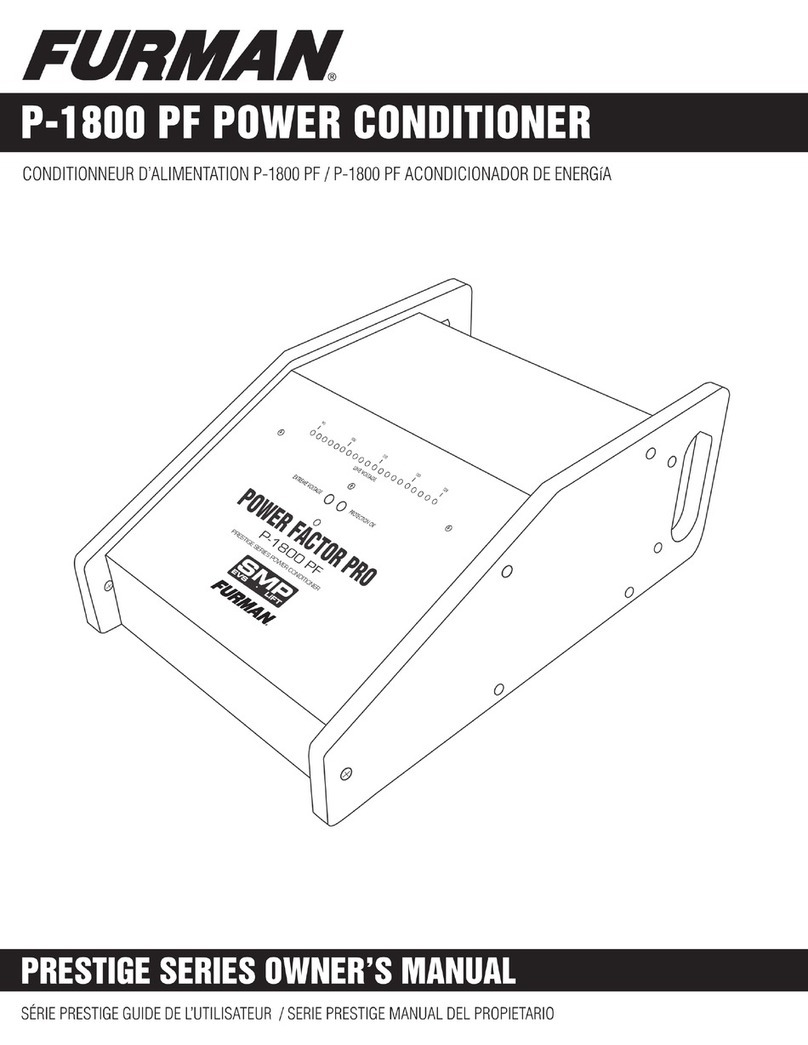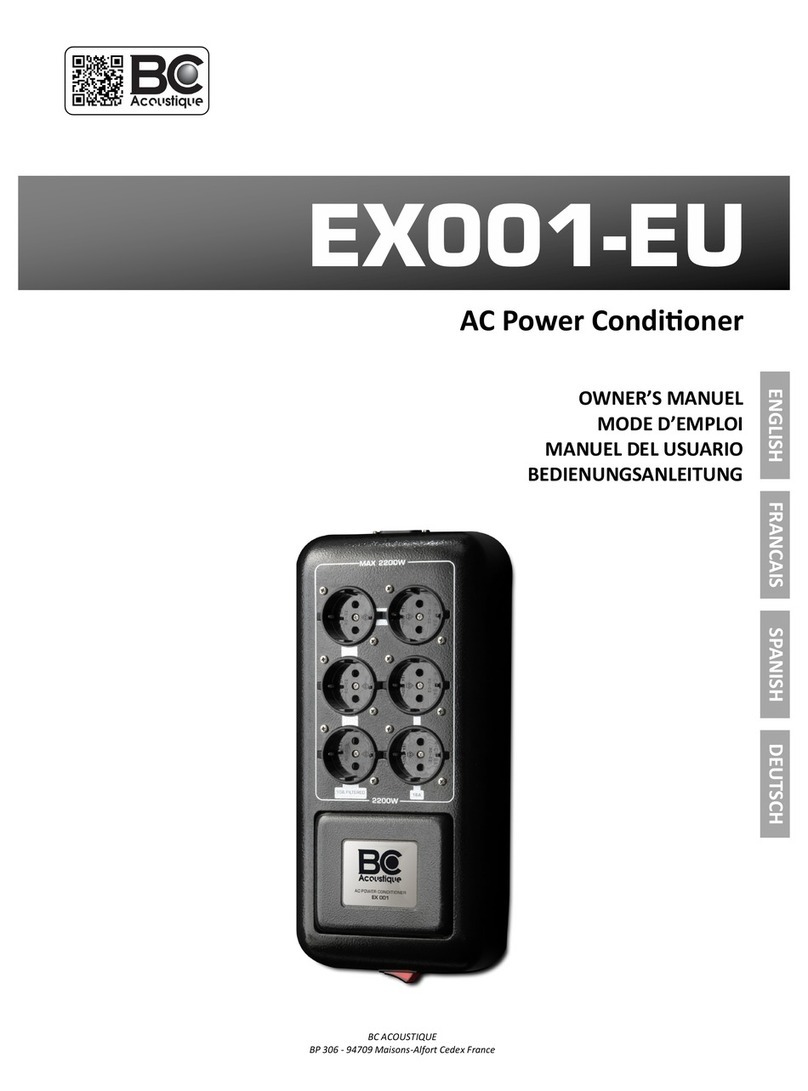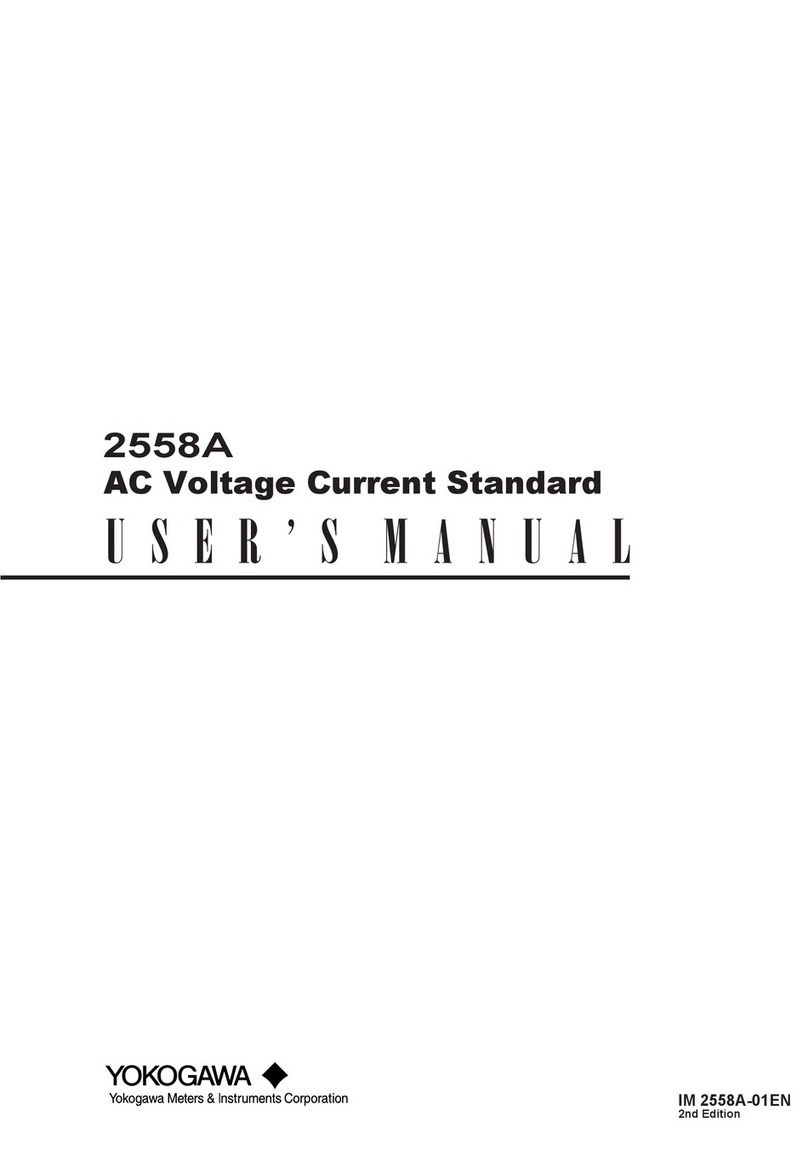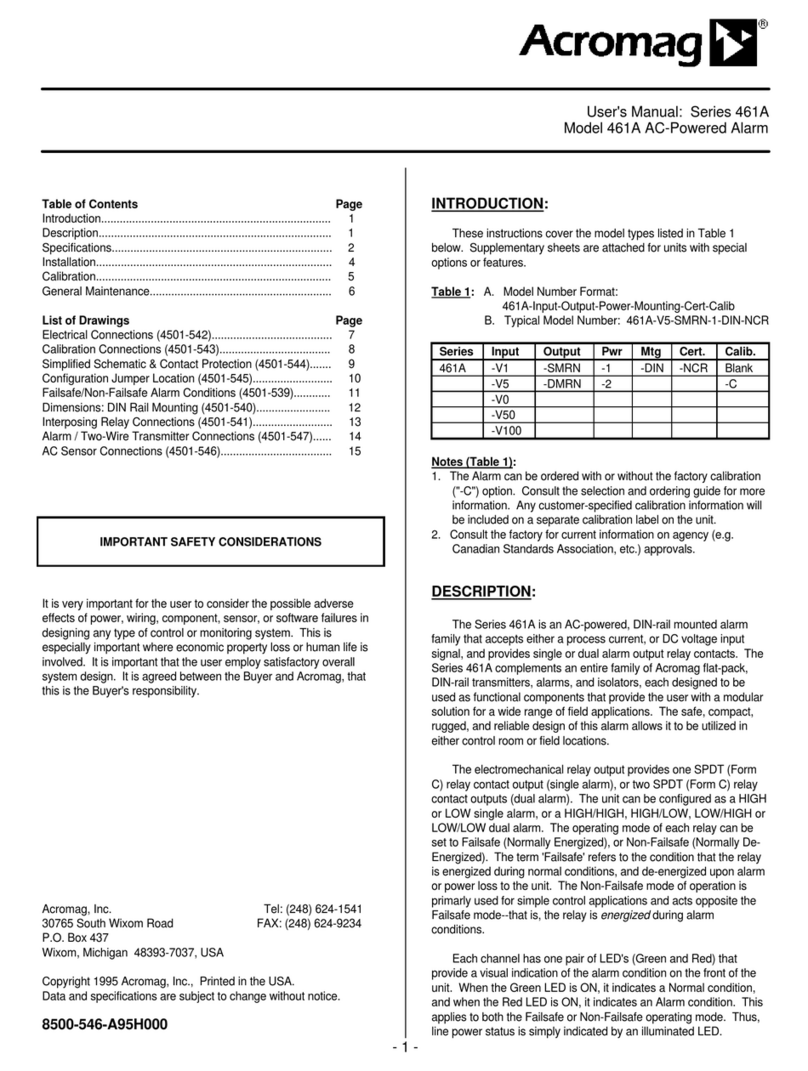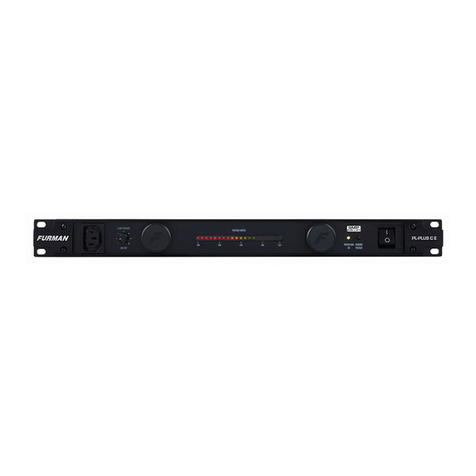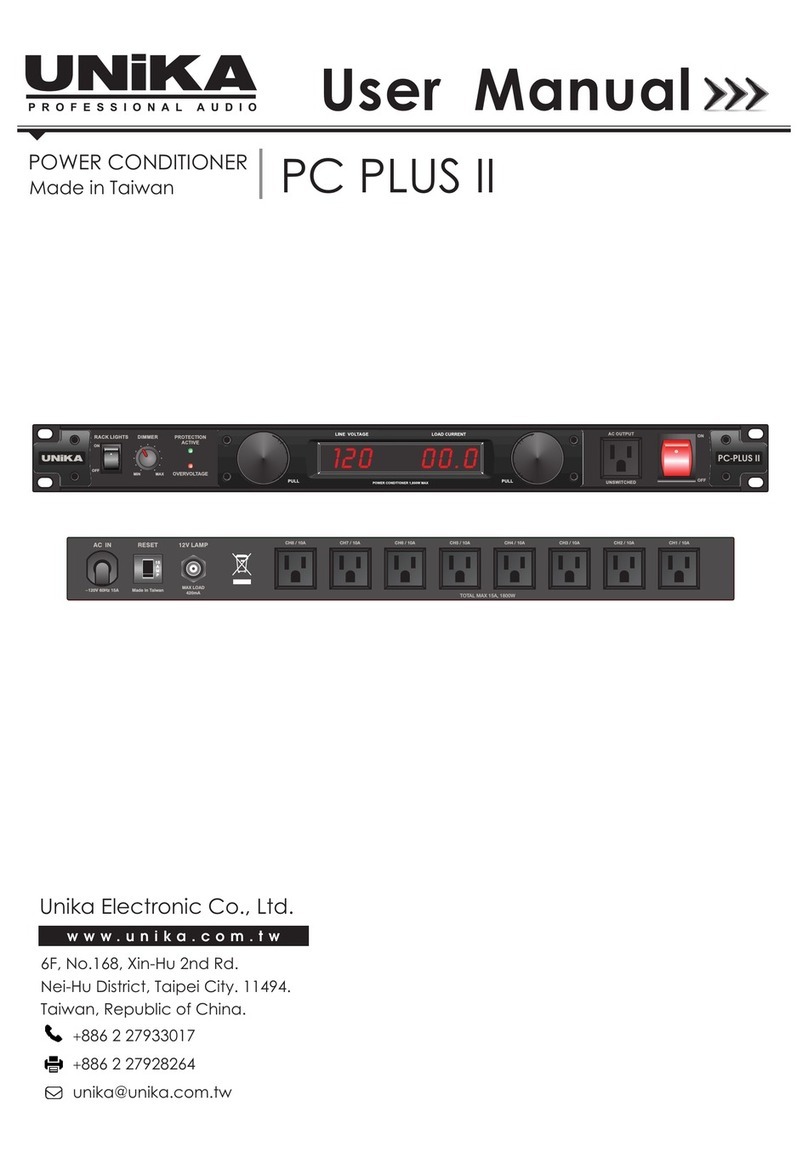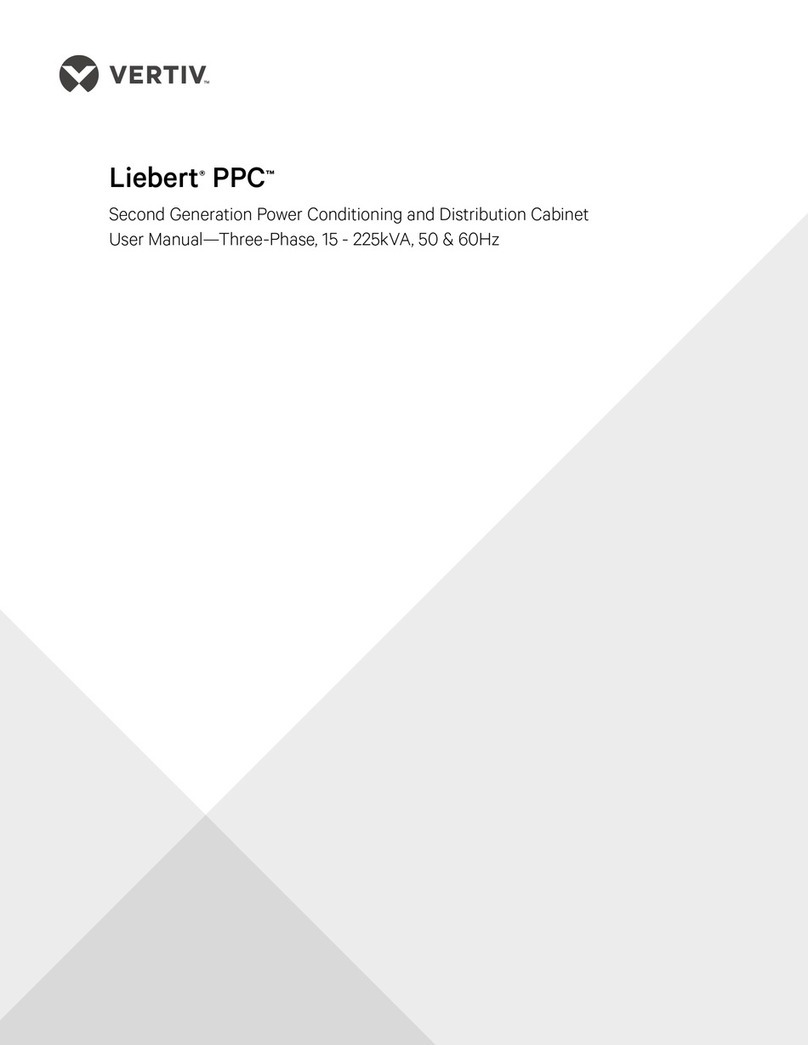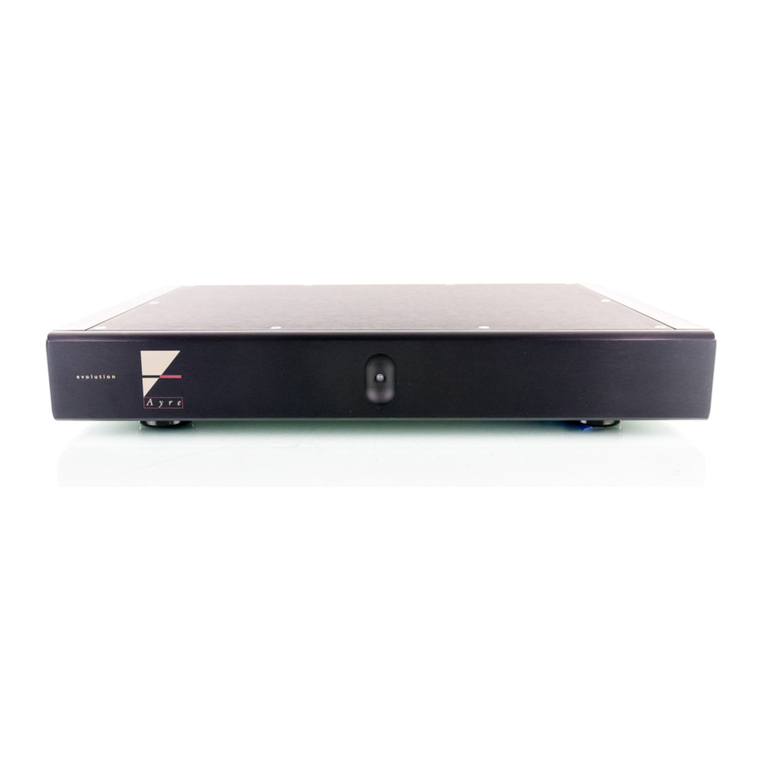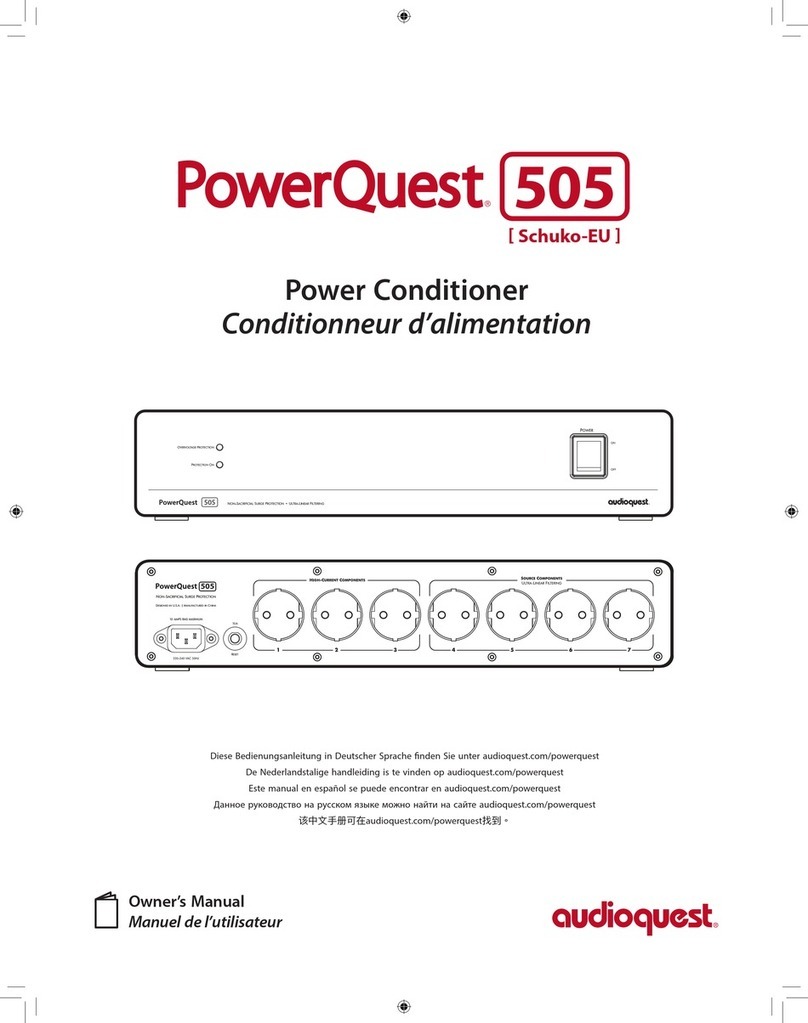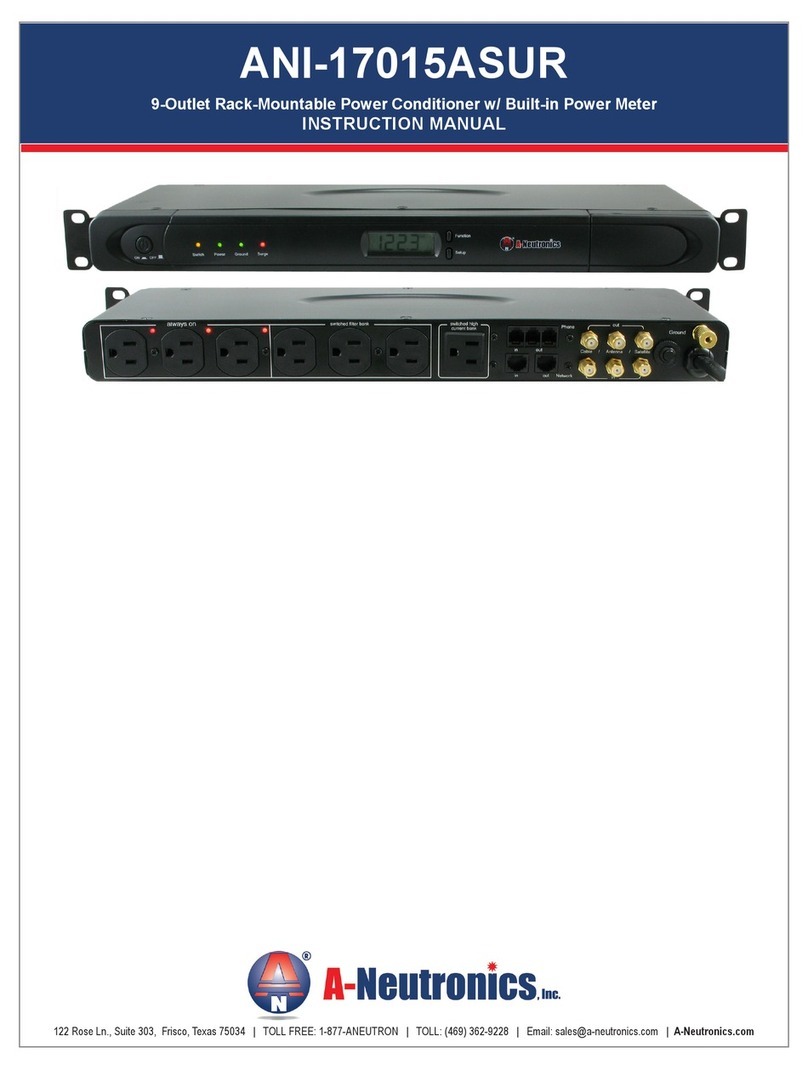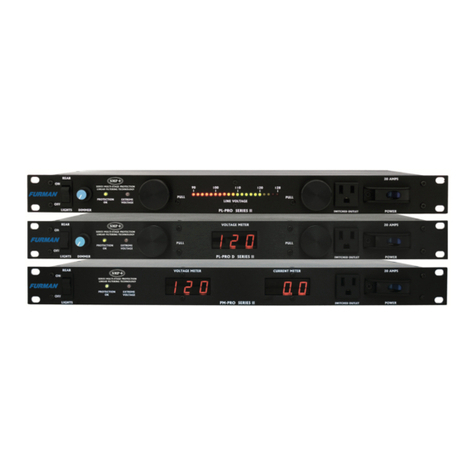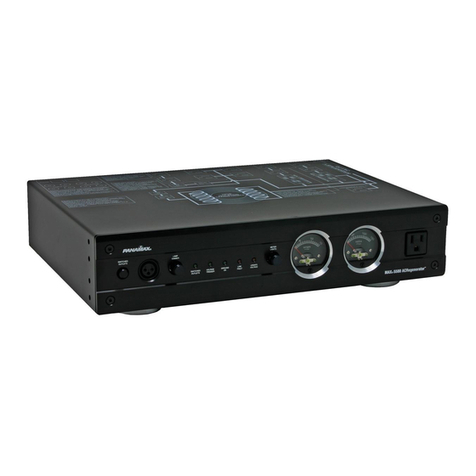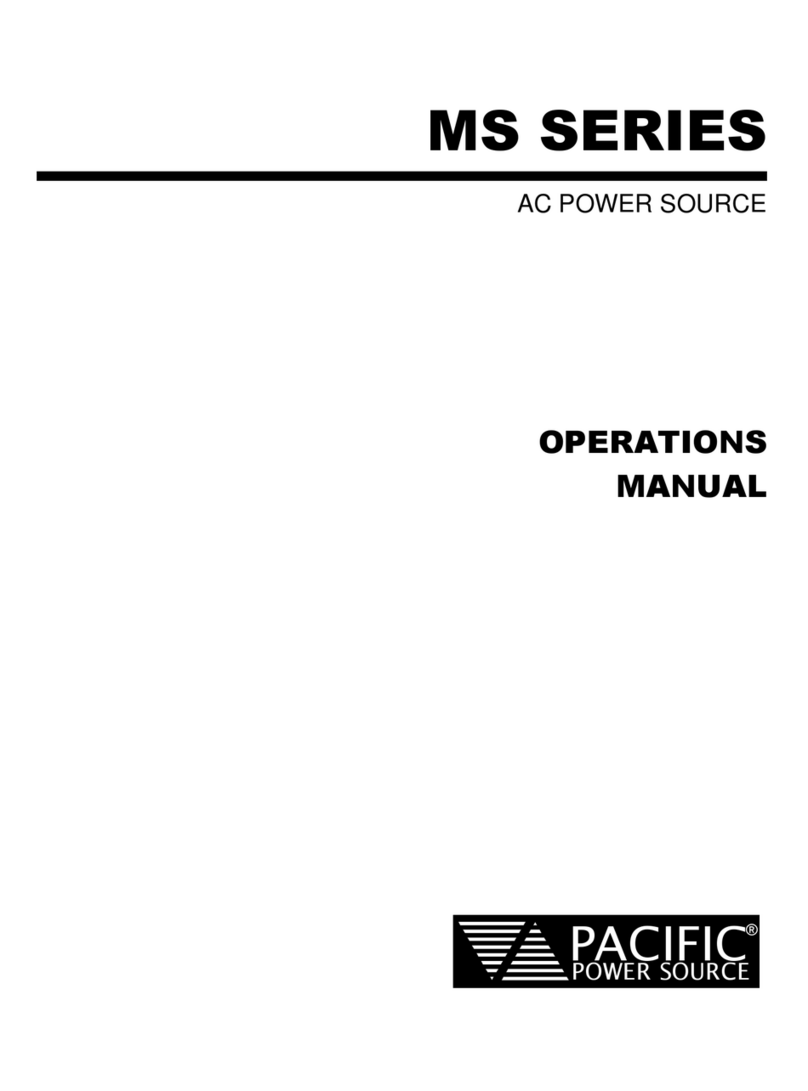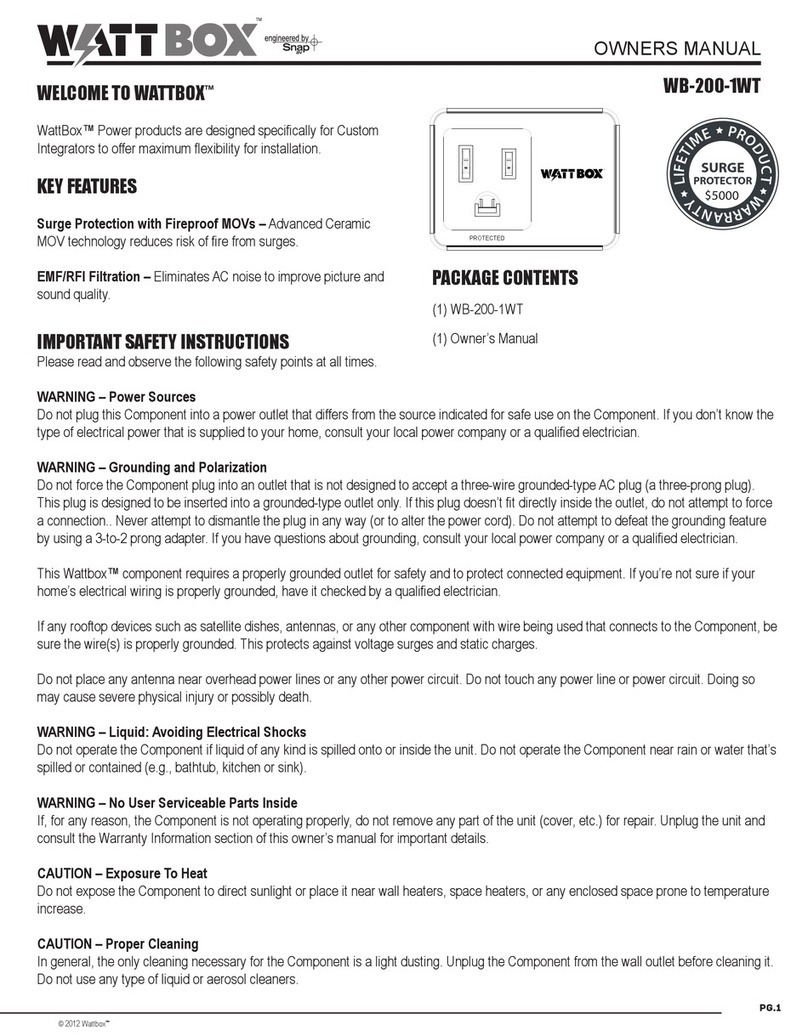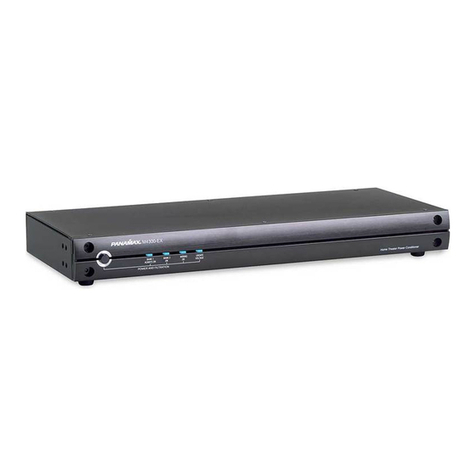NF DP015S User manual

PROGRAMMABLE AC POWER SOURCE
DP Series
INSTRUCTION MANUAL
NF Corporation


PROGRAMMABLE AC POWER SOURCE
DP Series
INSTRUCTION MANUAL
DA00027113-001


DP Series i
⎯⎯⎯ Preface ⎯⎯⎯
Thank you for purchasing our Programmable AC Power Source DP Series.
For safe and correct use of the electrical product, please first read "Safety Precautions"on the next
page.
Alert symbols in this manual
This manual uses the following alert symbols. The instructions by these alert symbols shall be
carefully obeyed to ensure equipment operator's safety and prevent damage to equipment.
Equipment handling could result in death or serious injury. This symbol contains information
to avoid such risk.
Equipment handling could result in minor or moderate injury, or property damage. This
symbol contains information to avoid such risk.
This manual consists of the following chapters.
If it is the first time for you to use this product, start with "1. Outline."
1. Outline: Explains the overview, configuration, and features of this product.
2. Preparation before Use: Explains the preparations carried out before installation or operation.
3. Basic operation: Explains the component names and basic operations.
4. Advanced Operation: Explains the operations more extensively.
5. Description of Screen and Menu: Explains the screen configuration and menu composition.
6. Remote Control: Explains the remote control via communication interface.
7. Options: Explains the available options.
8. Troubleshooting: Explains the remedies when an error message is displayed, or when a failure
is suspected.
9. Maintenance: Explains the methods of storage, repackaging, transportation, and maintenance.
10. Specifications: Provides the list of specifications of functions and performance.
CAUTION
WARNING

PROGRAMMABLE AC POWER SOURCE
ii
⎯⎯⎯ Safety Precautions ⎯⎯⎯
For safe use, ensure to obey the following warnings and considerations.
We are not responsible for damage resulting from failure to obey these warnings and considerations.
This product is an insulation Class I device (with a protective conductor terminal) complying with
the JIS and IEC standards.
Ensure you obey the instructions in this instruction manual.
This instruction manual contains instructions for safe operation and use of this product.
Before using the product, please read this manual first.
All the warning items contained in this instruction manual are intended for preventing risks that may
lead to serious accidents. Ensure to obey them.
Ensure to ground.
This product uses a line filter, which may cause electric shock if the product is not grounded.
To prevent electric shock accidents, connect it to an earth ground so that ground resistance is 100Ω
or less.
Check the power supply voltage.
This product operates on the power supply voltage specified in "2.4 Grounding and Power
Connections". Before connecting the product to a power supply, make sure that the voltage of
distribution board conforms to the power supply voltage rating of the product.
If you notice anything strange
If this product produces smoke, unusual odor, or strange sound, immediately cut the power to the
product and stop using it.
Should you encounter any anomaly like above, immediately contact us or our agent. Never use it
until the repair is completed.
Do not use in a gaseous atmosphere.
This may pose a risk of explosion or other.
Do not remove the cover.
This product has high-voltage portions inside. Never remove the cover.
When inspection into the inside of the product is needed, never allow anybody to touch the innards
except our certified service engineers.
Do not modify the product.
Never modify the product. Modification to the product may pose a new risk. We may refuse the
repair of a modified product at fault.

DP Series iii
Prevention of electric shock by output voltage
The maximum output of this product is ± 440 V. Be careful to avoid electric shock. Directly
touching the output or changing the cable connection while the output is on may cause electric
shock.
This product weights over 18 kg.
Do not carry it alone, or you may suffer physical injury.
Safety symbols
The following shows the general definitions of the safety symbols used on the product main unit and
in the instruction manual.
Refer to the instruction manual
This notifies the user of potential hazards and indicates that he/she must refer to the
instruction manual.
Electric shock hazard
This indicates that an electric shock may occur under specific conditions.
Protection conductor terminal
This indicates that the terminal needs to be grounded in order to prevent electric shock
accidents.
Before operating the equipment, ensure to connect this terminal to an earth ground by
the "Electric Facilities Technical Standards Type D (100Ωor less)" or a higher standard.
Warning
This contains information to avoid risks in equipment handling that could
result in loss of life or bodily injury (e.g., electric shock).
Caution
This contains information to avoid damage to the equipment in equipment
handling.
Other symbol
Chassis
This indicates that the terminal (or external conductor for a connector) is connected to
the chassis.
Request about disposal
For environmental preservation, pay attention to the followings when you dispose of this product.
The backlight of the LCD contains mercury.
This product shall be disposed of through an appropriate industrial waste disposer.
CAUTION
WARNING

PROGRAMMABLE AC POWER SOURCE
iv
Table of Contents
Page
Preface ........................................................................................................................................ i
Safety Precautions.......................................................................................................................ii
List of Figures ............................................................................................................................. x
List of Tables .............................................................................................................................xii
1. Outline ................................................................................................................................... 1
1.1 Overview ...................................................................................................................... 2
1.2 Series Line-up and Polyphase System Configuration .................................................. 2
1.3 Features ....................................................................................................................... 4
2. Preparation before Use ......................................................................................................... 7
2.1 Check before Use......................................................................................................... 8
2.2 About Installation Environment..................................................................................... 8
2.3 Cautions during Moving and Transportation............................................................... 11
2.4 Grounding and Power Connections ........................................................................... 13
2.5 Output and System Cable Connection ....................................................................... 17
2.5.1 Single-phase Model ............................................................................................ 17
2.5.2 Polyphase Model................................................................................................. 19
2.5.3 Multi-phase Model............................................................................................... 21
2.5.4 Polyphase System............................................................................................... 22
2.6 How to Tilt Control Panel............................................................................................ 26
2.7 Simple Operation Check ............................................................................................ 27
2.8 Calibration .................................................................................................................. 30
3. Basic Operation................................................................................................................... 31
3.1 Component Name ...................................................................................................... 32
3.1.1 Front.................................................................................................................... 32
3.1.2 Rear .................................................................................................................... 34
3.1.3 Control Panel ...................................................................................................... 36
3.2 Power On/Off.............................................................................................................. 37
3.2.1 Before Turning on the Power .............................................................................. 37
3.2.2 Set the Output Phase Mode (Multi-phase model Only)....................................... 38
3.2.3 Power On ............................................................................................................ 38
3.2.4 Screen Display and Operations at Starting Up ................................................... 39
3.2.5 The Settings Loaded after Startup ...................................................................... 39
3.2.6 Checking the Rated Power ................................................................................. 40
3.2.7 Power Off ............................................................................................................ 40
3.3 Basic Key Operations................................................................................................. 41
3.3.1 Changing the Output Function (Continuous Output/Sequence/Simulation) ..... 41
3.3.2 Item Selection ..................................................................................................... 41

DP Series v
3.3.3 Using Soft-keys ................................................................................................... 42
3.3.4 Closing Windows................................................................................................. 43
3.3.5 Entering Values (Numerical Entry Box)............................................................... 44
3.3.6 Entering Strings (Character String Entry Box) .................................................... 44
3.3.7 Using Shortcut Operations (SHIFT Key) ............................................................. 46
3.4 Using the Continuous Function .................................................................................. 47
3.4.1 Setting the AC/DC Mode and the Signal Source ................................................ 47
3.4.2 Setting the Output Range.................................................................................... 50
3.4.3 Setting Waveforms .............................................................................................. 51
3.4.4 Setting the Output Voltage (Single-phase Output).............................................. 53
3.4.5 Setting the Output Voltage (Polyphase Output) .................................................. 54
3.4.6 Setting the Output Frequency ............................................................................. 56
3.4.7 Setting the Output On/Off Phase ........................................................................ 56
3.4.8 Turning the Output On or Off .............................................................................. 57
3.4.9 Using the Measurement Function ....................................................................... 58
3.4.10 Switching the Display Format (RMS/AVG/Peak) of the Measured Value............ 59
3.4.11 Enlarge Display Letters for the Measured Value ................................................ 61
3.4.12 Clearing the Output Current Peak-hold Value..................................................... 63
3.4.13 Switching the Target Phase of which the Measured Values are Displayed
(Polyphase Output) ............................................................................................. 65
4. Advanced Operation............................................................................................................ 67
4.1 Using Limiter, Setting Limiter ..................................................................................... 68
4.1.1 Use Peak Current Limiter.................................................................................... 68
4.1.2 Using RMS Current Limiter ................................................................................. 70
4.1.3 Using Voltage Setting Range Limit...................................................................... 71
4.1.4 Using Frequency Setting Range Limit................................................................. 73
4.1.5 About Wattage Limiter......................................................................................... 74
4.2 Using Sequence Function .......................................................................................... 75
4.2.1 Basics.................................................................................................................. 75
4.2.2 Parameters of Sequence Function...................................................................... 78
4.2.3 Example of Output Using Sequence Function .................................................... 81
4.2.4 Process Flow in a Step ....................................................................................... 81
4.2.5 Edit a Sequence.................................................................................................. 83
4.2.6 Load a Sequence ................................................................................................ 85
4.2.7 Execute a Sequence ........................................................................................... 89
4.2.8 Save a Sequence ................................................................................................ 92
4.2.9 Clear/Rename Sequence .................................................................................... 96
4.2.10 Set so as the Sequence Function is Selected at Power-on .............................. 100
4.2.11 Sequence Control by External Control.............................................................. 101
4.2.12 Screen Overview ............................................................................................... 101
4.3 Using Power Fluctuation Testing (Simulation) Function........................................... 103
4.3.1 Basics................................................................................................................ 103

PROGRAMMABLE AC POWER SOURCE
vi
4.3.2 Simulation Function Parameters ....................................................................... 104
4.3.3 Output Examples Using Simulation Function.................................................... 106
4.3.4 Process Flow in a Step ..................................................................................... 108
4.3.5 Editing Simulation ............................................................................................. 108
4.3.6 Loading a Simulation..........................................................................................111
4.3.7 Executing Simulation......................................................................................... 114
4.3.8 Saving Simulation ............................................................................................. 116
4.3.9 Clear/Rename Simulation ................................................................................. 120
4.3.10 Set so as the Simulation Function is Selected at Power-on ............................. 124
4.3.11 Simulation Control by External Control ............................................................. 125
4.3.12 Screen Overview ............................................................................................... 125
4.4 Measuring Harmonic Current ................................................................................... 127
4.4.1 Harmonic current............................................................................................... 127
4.4.2 Basics................................................................................................................ 128
4.4.3 Measured Value Display Method ...................................................................... 128
4.5 Measuring Inrush Current......................................................................................... 129
4.5.1 Inrush Current ................................................................................................... 129
4.5.2 Basics................................................................................................................ 130
4.5.3 Measurement Method ....................................................................................... 130
4.5.4 Measurement Tips............................................................................................. 131
4.6 Using Clipped Sine Wave......................................................................................... 131
4.7 Outputting Arbitrary Waveform ................................................................................. 134
4.7.1 Basics................................................................................................................ 134
4.7.2 Arbitrary Waveform Creation Procedure ........................................................... 135
4.7.3 Arbitrary Waveform Creation Example.............................................................. 135
4.7.4 Transferring Arbitrary Waveform....................................................................... 135
4.7.5 Outputting Arbitrary Waveform.......................................................................... 138
4.8 Using Memory Function ........................................................................................... 139
4.8.1 Basic Setting Memory ....................................................................................... 140
4.8.2 Arbitrary Waveform Memory ............................................................................. 147
4.8.3 Sequence Memory ............................................................................................ 151
4.8.4 Simulation Memory ........................................................................................... 152
4.9 Using USB Memory Function ................................................................................... 153
4.10 Using Monitor Function ............................................................................................ 154
4.11 Using Remote Sensing Function.............................................................................. 157
4.12 Using AGC Function................................................................................................. 160
4.13 Using Autocal Function............................................................................................. 163
4.14 Adjusting DC Offset.................................................................................................. 167
4.15 Using for Unbalanced Polyphase Output ................................................................. 169
4.16 Using as DC Power Supply ...................................................................................... 171
4.17 Setting Voltage using External DC Input Signal ....................................................... 172
4.17.1 Using External Signal in AC-VCA Mode ........................................................... 172

DP Series vii
4.17.2 Using External Signal in DC-VCA Mode ........................................................... 174
4.18 Control Using External Control Function .................................................................. 176
4.19 Synchronizing the Output Frequency with the Power Line or the External Signal... 181
4.20 Amplifying the External Signal Input (Optional)........................................................ 183
4.21 Turning the Output On or Off Rapidly....................................................................... 184
4.22 Enabling Automatic Output-On at Power-On............................................................ 186
4.23 Using the Emission CO2Calculator.......................................................................... 187
4.24 Power Unit Energization Setting (Using Under the Restricted Rated Power) .......... 189
4.25 Key Lock................................................................................................................... 191
4.26 Beep ......................................................................................................................... 191
4.27 Changing the Background Color and the Contrast of the Screen ............................ 192
4.28 Restoring to the Factory Default Setting (Reset) ..................................................... 193
5. Description of Screen and Menu ....................................................................................... 197
5.1 Screen Configuration................................................................................................ 198
5.1.1 Status Icon ........................................................................................................ 199
5.1.2 Measured Value Display Items ......................................................................... 200
5.1.3 Output Setting Display Items............................................................................. 201
5.1.4 Warning and Error Display ................................................................................ 201
5.2 Menu Composition.................................................................................................... 202
5.2.1 Menus of the Continuous Function ................................................................... 202
5.2.2 Menus of the Sequence Function ..................................................................... 203
5.2.3 Menus of the Simulation Function..................................................................... 204
5.2.4 Menus of the Memory Function......................................................................... 204
5.2.5 System Menus................................................................................................... 205
6. Remote Control ................................................................................................................. 207
6.1 Communication Interface ......................................................................................... 208
6.1.1 USB ................................................................................................................... 208
6.1.2 RS232 ............................................................................................................... 210
6.1.3 GPIB (Optional)................................................................................................. 212
6.2 Remote/Local State Switching.................................................................................. 214
6.2.1 Remote State .................................................................................................... 214
6.2.2 Local State ........................................................................................................ 214
7. Options .............................................................................................................................. 215
7.1 AGC and Measurement Extensions ......................................................................... 216
7.2 Sequence and Simulation Functions........................................................................ 216
7.3 External Signal Input ................................................................................................ 216
7.4 Remote Controller .................................................................................................... 216
7.5 System Cable (for Polyphase System)..................................................................... 217
7.6 GPIB ......................................................................................................................... 217
7.7 Rack-Mount Adapter................................................................................................. 218
7.8 Replacement Air Filter .............................................................................................. 218
8. Troubleshooting.................................................................................................................221

PROGRAMMABLE AC POWER SOURCE
viii
8.1 Error Messages and Error Handling......................................................................... 222
8.1.1 Error Message Screen ...................................................................................... 222
8.1.2 If An Error Message is Displayed...................................................................... 222
8.1.3 If An Error Occurs Repeatedly .......................................................................... 223
8.1.4 Protection Operation Types .............................................................................. 224
8.1.5 Error Message List ............................................................................................ 225
8.2 When a Failure is Suspected ................................................................................... 229
9. Maintenance...................................................................................................................... 235
9.1 Preface ..................................................................................................................... 236
9.2 Daily Maintenance.................................................................................................... 236
9.3 Storage, Repackaging, Transportation ..................................................................... 239
9.4 Checking Firmware Version ..................................................................................... 239
10.Specifications .................................................................................................................... 241
10.1 Output Function........................................................................................................ 242
10.2 Output Range ........................................................................................................... 242
10.3 AC/DC Mode ............................................................................................................ 243
10.4 Signal Source ........................................................................................................... 244
10.5 AC Output................................................................................................................. 245
10.6 DC Output ................................................................................................................ 247
10.7 Output Voltage Stability ............................................................................................ 248
10.8 Distortion of Output Voltage Waveform .................................................................... 248
10.9 Power Input .............................................................................................................. 249
10.10 Withstand Voltage and Insulation Resistance .......................................................... 249
10.11 Measurement Function............................................................................................. 250
10.12 Power Unit Energization Setting............................................................................... 254
10.13 Current Limiter.......................................................................................................... 255
10.14 Setting Range Limit Function ................................................................................... 256
10.15 Remote Sensing....................................................................................................... 257
10.16 AGC (Optional)......................................................................................................... 258
10.17 Autocal (Output Voltage Compensation) .................................................................. 258
10.18 Sequence (Optional) ................................................................................................ 259
10.19 Simulation (Optional)................................................................................................ 260
10.20 Clipped Sine Wave ................................................................................................... 261
10.21 Arbitrary Wave.......................................................................................................... 261
10.22 External Signal Input ................................................................................................ 262
10.22.1 External Synchronous Signal Input (Signal Source SYNC only) ...................... 262
10.22.2 Voltage Setting Signal Input (Signal Source VCA only).................................... 262
10.22.3 External Signal Input (Optional, only EXT and ADD)........................................ 263
10.23 General Function...................................................................................................... 263
10.24 Memory Function...................................................................................................... 264
10.25 Self-diagnosis/Protection Function........................................................................... 265
10.26 External Control I/O.................................................................................................. 266

DP Series ix
10.27 External Interface ..................................................................................................... 267
10.28 USB Memory Interface ............................................................................................. 267
10.29 Waveform Monitor Output ........................................................................................ 268
10.30 Operation Environment ............................................................................................ 269
10.31 Externals, Weight, and Terminal Block..................................................................... 270
10.32 Option ....................................................................................................................... 271
10.33 Outline Dimensional Drawing ................................................................................... 272
Index....................................................................................................................................... 276

PROGRAMMABLE AC POWER SOURCE
x
Figures and Tables
List of Figures
Page
Figure 1-1 Model Naming System ........................................................................................... 3
Figure 2-1 How to Use the Adjuster Foot .............................................................................. 10
Figure 2-2 Terminal Panel Arrangement of Multi-phase Model (Rear) .................................. 21
Figure 3-1 Component Name (Front) .................................................................................... 32
Figure 3-2 Component Name (Rear)..................................................................................... 34
Figure 3-3 Component Name (Control Panel)....................................................................... 36
Figure 3-4 The Self Check Screen to be Displayed when Starting the Unit in Other System or
in Other Output Phase Mode than before ............................................................ 39
Figure 3-5 The Rated Power Icon ......................................................................................... 40
Figure 3-6 The Root Menu .................................................................................................... 41
Figure 3-7 The Example of a Selection Box.......................................................................... 42
Figure 3-8 The Example of a Data List Box .......................................................................... 42
Figure 3-9 Soft-key Function ................................................................................................. 43
Figure 3-10 The Example of the Window with the [Close] Button........................................... 43
Figure 3-11 The Example of the Window with the [OK]/[Cancel] Button................................. 44
Figure 3-12 The Numerical Entry Box ..................................................................................... 44
Figure 3-13 Character String Entry Box .................................................................................. 45
Figure 3-14 The Normal View (left) and the Simple View Mode (right) ................................... 61
Figure 4-1 Step-control Parameters and intra-Step Parameters ........................................... 76
Figure 4-2 Step Behavior....................................................................................................... 77
Figure 4-3 Stop Phase........................................................................................................... 80
Figure 4-4 Example of Sequence.......................................................................................... 81
Figure 4-5 Process Flow in Sequence Step .......................................................................... 82
Figure 4-6 Branch Operation/Stop Operation........................................................................ 82
Figure 4-7 Sequence Edit View........................................................................................... 102
Figure 4-8 Sequence Control View (Output Off State) ........................................................ 102
Figure 4-9 Sequence Control View (Output On State/Sequence in Execution) .................. 102
Figure 4-10 Sequence Control View (Output On State/Sequence Stopped)......................... 103
Figure 4-11 Simulation Function Steps ................................................................................. 105
Figure 4-12 Voltage Dip Simulation Example........................................................................ 106
Figure 4-13 Voltage Change Simulation Example................................................................. 107
Figure 4-14 Process Flow through Simulation Steps ............................................................ 108
Figure 4-15 Stop Operation ................................................................................................... 108
Figure 4-16 Simulation Edit View .......................................................................................... 126
Figure 4-17 Simulation Control View (Output Off State, Simulation Stopped) ...................... 126
Figure 4-18 Simulation Control View (Output On State, Simulation Running) ...................... 126

DP Series xi
Figure 4-19 Simulation Control View (Output On State, Simulation Stopped) ...................... 127
Figure 4-20 Current Waveform Containing Many Harmonic Components ............................ 127
Figure 4-21 Inrush Current Example ..................................................................................... 129
Figure 4-22 Clipped Sine Wave............................................................................................. 131
Figure 4-23 USB Memory Folder Structure ........................................................................... 153
Figure 4-24 Sensing Input Terminals in Multi-phase Model .................................................. 158
Figure 4-25 The Message Window to be Shown Before the Automatic Output-On After the
Power-On ........................................................................................................... 186
Figure 5-1 Component Name (Display Areas on the Screen) ............................................. 198
Figure 5-2 Menu Composition ............................................................................................. 202
Figure 7-1 Remote Controller External View....................................................................... 217
Figure 7-2 Front Grills ......................................................................................................... 219
Figure 8-1 Error Message Screen Example ........................................................................ 222
Figure 10-1 Range of Ambient Temperature/Humidity .......................................................... 269
Figure 10-2 DP015S, DP030S, DP030D (Type 1 cabinet).................................................... 272
Figure 10-3 DP045S, DP045T, DP045M, DP060S, DP060D (Type 2 cabinet) ..................... 273
Figure 10-4 DP075S, DP090S, DP090D, DP090T (Type 3 cabinet)..................................... 274
Figure 10-5 DP090M, DP105S, DP120S, DP120D (Type 4 cabinet) .................................... 275

PROGRAMMABLE AC POWER SOURCE
xii
List of Tables
Page
Table 1-1 Series Line-up (Single-phase Model, Polyphase Model) ....................................... 3
Table 1-2 Series Line-up (Multi-phase Model) ....................................................................... 3
Table 1-3 Polyphase System Configuration List .................................................................... 4
Table 2-1 List of Content........................................................................................................ 8
Table 2-2 Heat Value (Estimate at Power Input 200 V, Rated Output).................................. 9
Table 2-3 Weight .................................................................................................................... 9
Table 2-4 Power Input Terminal........................................................................................... 14
Table 2-5 Maximum Input Power/Current and Power Input Cable....................................... 14
Table 2-6 Output Terminals ................................................................................................. 17
Table 2-7 Outlet List............................................................................................................. 19
Table 3-1 Component Name (Front) .................................................................................... 33
Table 3-2 Component Name (Rear)..................................................................................... 35
Table 3-3 Component Name (Control Panel)....................................................................... 36
Table 3-4 How the Rated Power Icon is Displayed Depending on the Power Unit
Energization Setting............................................................................................. 40
Table 3-5 Character String Entry List................................................................................... 45
Table 3-6 Shortcut Operations ............................................................................................. 46
Table 3-7 Description of the AC/DC Mode........................................................................... 47
Table 3-8 The Description of the Signal Source .................................................................. 47
Table 3-9 List of the Selectable Combinations of the AC/DC Mode and the Signal Source 48
Table 3-10 The Setting Range per Output Range ................................................................. 50
Table 3-11 Main Measurement Functions.............................................................................. 58
Table 3-12 The Measuring Mode for the Measured Values of the Output Voltage and Output
Current ................................................................................................................. 59
Table 4-1 Wattage Limiter Value per Phase (Reference value, Unit: W)............................. 75
Table 4-2 Parameters of Sequence Function ...................................................................... 78
Table 4-3 Example of Editing Sequence.............................................................................. 81
Table 4-4 Simulation Function Parameters........................................................................ 104
Table 4-5 Simulation Function Steps and Settable Step Parameters ................................ 105
Table 4-6 Voltage Dip Simulation Edit Example ................................................................ 107
Table 4-7 Voltage Change Simulation Edit Example ......................................................... 107
Table 4-8 Different Output Voltage Settings Depending on Clip Depth Setting Method.... 132
Table 4-9 Content Saved in Sequence Memory ................................................................ 151
Table 4-10 Content Saved in Simulation Memory................................................................ 152
Table 4-11 Setting Range of DC Offset Adjustment Value .................................................. 167
Table 4-12 CONTROL I/O Pin Assignment.......................................................................... 177
Table 4-13 The Output Terminal Impedance (Reference Values in the Rear Output Terminal)
in the Output Off State when the Activation of the Output Relay is Disabled .... 184
Table 4-14 Setting Items to be Reset................................................................................... 193
Table 5-1 Component Name (Display Areas on the Screen)............................................. 198

DP Series xiii
Table 5-2 Status Icons ....................................................................................................... 199
Table 5-3 Measured Value Display Items .......................................................................... 200
Table 5-4 Output Setting Display Items ............................................................................. 201
Table 5-5 Menus of the Continuous Function .................................................................... 202
Table 5-6 Menus of the Sequence Function ...................................................................... 203
Table 5-7 Menus of the Simulation Function...................................................................... 204
Table 5-8 Menus of the Memory Function ......................................................................... 204
Table 5-9 System Menus ................................................................................................... 205
Table 7-1 Rack-Mount Adapter Model Names ................................................................... 218
Table 7-2 Replacement Air Filter Model Names ................................................................ 218
Table 8-1 Description of the Error Message Screen .......................................................... 222
Table 8-2 Error Message List............................................................................................. 225
Table 8-3 Actions When a Failure is Suspected ................................................................ 229


1. Outline
PROGRAMMABLE AC POWER SOURCE
2
1.1 Overview
The DP series offers a compact, lightweight, and highly-efficient power system, ranging from
single-phase 1.5 kVA to three-phase 36 kVA at a maximum. It also provides various interfaces such
as the external control input/output, communication interface, and remote controller (some of them
are optional) to address a wide variety of usage. You can configure several products of same
single-phase model to participate in a single-phase three-wire system or three-phase four-wire
system by using a System Cable (optional).
The AC output of DP series ranges from 0 to 310 V for voltage (phase voltage) and 1 to 550 Hz for
frequency, and the DC voltage output ranges from −440 V to +440 V. The maximum output current
(phase current) is 120 Arms continuous (single-phase 12 kVA, 100 V range), and if you use a
capacitor input type rectified load, you can output a peak value of 480 Apk at a maximum
(single-phase 12 kVA, 100 V range, crest factor of 4).
1.2 Series Line-up and Polyphase System Configuration
In the DP series, multiple models (single-phase model, polyphase model) are available with various
combinations of output capacity and output phase mode. The lineups of single-phase model and
polyphase model are listed in Table 1-1.
The DP series also offers the Multi-phase model which can switch the output phase mode
(single-phase two-wire, single-phase three-wire, or three-phase four-wire) on a cabinet. When you
set the "phase mode setting switch" of the Multi-phase model and then turn on the power, the model
operates as single-phase model or polyphase model as shown in Table 1-2. The operation
specification, performance specification, and manipulation method of the Multi-phase model follow
those of the single-phase model and polyphase model of the DP series shown in Table 1-2.
The model naming system of the DP series is shown in Figure 1–1.
For the single-phase model, you can connect two or three products of the same model using an
optional System Cable to allow single-phase three-wire output or three-phase four-wire output,
respectively (polyphase system). The polyphase system configurations are listed in Table 1-3.
This manual suits for next models
15
Table of contents
Other NF AC Power Distribution manuals


